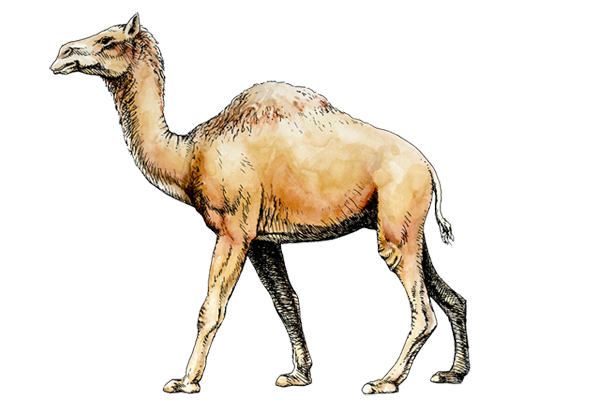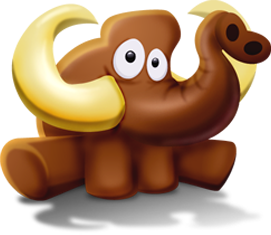-

Homotherium serum
2 million to 10,000 years ago
The American scimitar-toothed cat had large canines that were up to 7 inches (18 centimeters) long. They were about the size of modern African lions and had short, powerful legs, indicating that they probably hunted by ambushing their prey rather than chasing them down.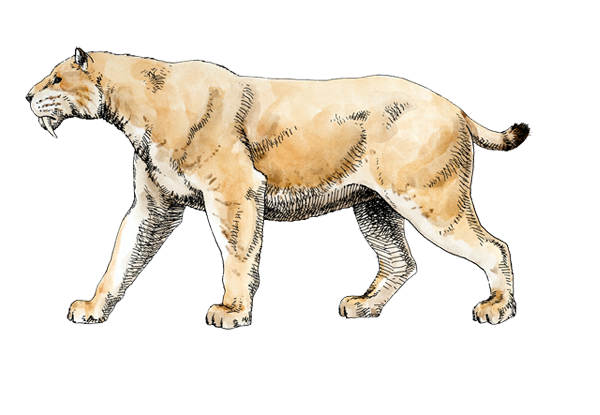
-

Arctodus simus
1.8 million to 10,000 years ago
The short-faced bear was the largest carnivore in North America during the Ice Age. It was taller than the brown (grizzly) bear, with longer, more slender hind legs, and a relatively short face that was more reminiscent of a lion than any living North American bear. In North America, the short-faced bear occupied the high grasslands west of the Mississippi, from Alaska to Mexico. In these areas, it probably preyed upon bison, deer, and horses.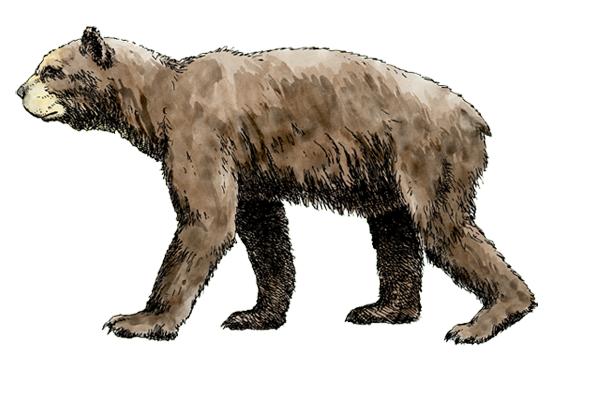
-

Paramylodon harlani
1.5 million to 10,000 years ago
The giant ground sloth was related to modern tree sloths, but was much larger, standing about 6 feet (1.8 meters) tall and weighing 3,500 pounds (1,600 kilograms). It had very large, powerfully built limbs and claws. It moved in an unusual manner, walking on the backs of its forefeet and the sides of its hind feet.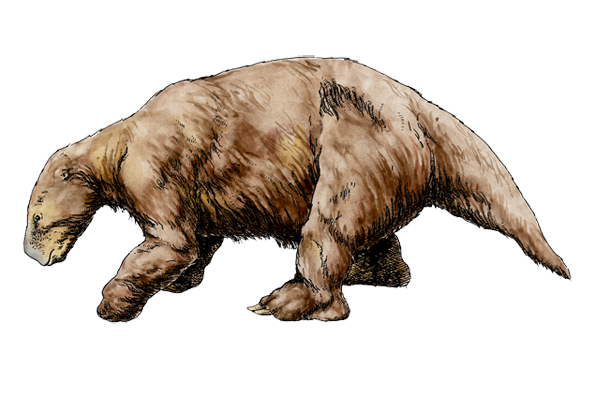
-

Camelops hesternus
300,000 to 10,000 years ago
The Western camel is an extinct genus of camels that once roamed western North America and disappeared along with mastodons at the end of the Pleistocene about 10,000 years ago. They were slightly taller than modern camels. Scientists are not certain if this species possessed a hump or lacked one, like its modern llama relatives.